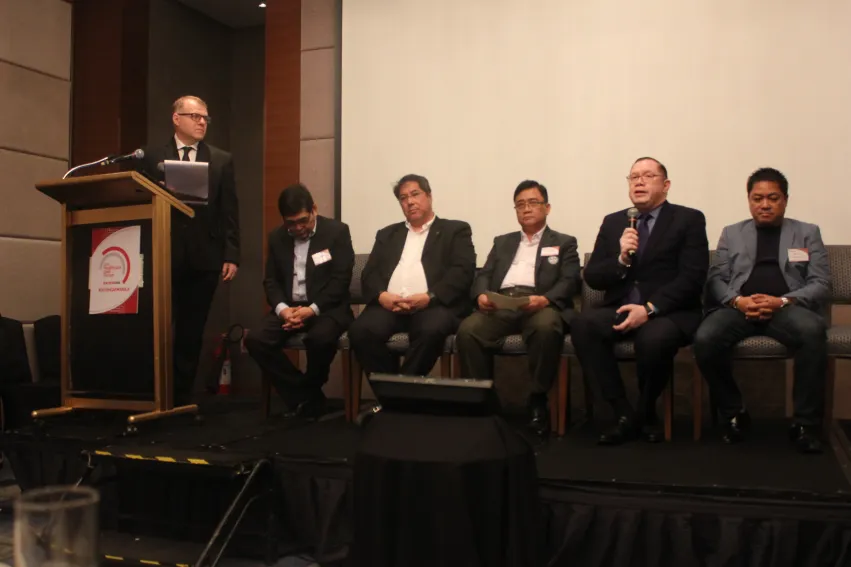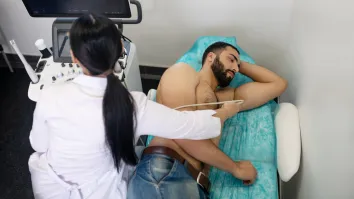
Closure looms for 300 'mom and pop' hospitals in the Philippines
They’re being wiped out by larger healthcare players.
The demise of as much as 300 out of 2,000 mom and pop hospitals, or small family-owned hospitals with about 50-100 beds, looms in the near future as they cope with increasingly unsustainable operations due to heated competition from medical giants. The lack of financial assistance from the central government, plus the increased competition from improving facilities and services in public hospitals threaten their existence, according to speakers at the first Healthcare Asia Roadshow Forum held last March 1 at the Makati Shangri La.
“I am predicting the demise of mom and pop hospitals. The small hospitals the 50-100 bed hospitals - owned by the father, he built it, the son inherited it, and the sister and wives run it - they will not be able to compete with likes of Metro Pacific, Ayala Health United,” said Dr Teodoro Herbosa, Executive Vice President of the University of the Philippines System who also served as the former undersecretary of the Department of Health.
This grim outlook comes as the share of private sector hospitals is steadily eating up the local healthcare pie after private beds grew from 51% to 54% in a mere three years, effectively stamping on smaller medical service providers.
“This is happening [right now]. Either you sell out or you try to invest, you try to just be competitive with your efficiency models,” Herbosa added.
Sin tax
The looming extinction of local, family-run hospitals is also aggravated by the ongoing improvements for the public health sector as the steady stream of revenue from the passage of the Sin Tax bill last 2012 were directed to finance the operations of government health care facilities like the Philippine General Hospital.
“When we passed the Sin Tax, the government finance people said we would earn only about $577.2m (Php30b) a year. In the first year in 2013, we earned $2.5b (Php130b) from cigarette taxes, 85% of that went to health care,” Herbosa said.
He noted that mom and pop hospitals started to complain, because, after the revenue boost, the government started buying equipment like CT scans, MRIs, ultrasound, to upgrade their hospitals. “The middle class started moving away from the private sector and started going to the public hospitals. This is also affecting the private sector business,” he added.
PhilHealth woes
The government’s primary healthcare insurance provider, PhilHealth, is also another source of headache as its antiquated model and ill-equipped technology infrastructure is placing the most burden on local and family-run hospitals, according to Rustico Jimenez, president of the Private Hospitals Association of the Philippines.
Hospitals and other health care providers duly accredited by PhilHealth are eligible for reimbursements under the National Health Insurance Programme.
However, Jimenez said that local accredited hospitals are not properly receiving their dues. He cited an instance when a 10-15 bed hospital, which is eligible to $57,720-$76,960 (Php3m-4m) in financial assistance, received only $3,848-$5,772 (Php200,000-Php300,000).
Despite a provision under RA 10932 mandating the PhilHealth to reimburse health care providers for the basic emergency care and transportation costs incurred by poor and indigent patients, Jimenez cited anecdotal reports PhilHealth delaying claims payments by two to six months.
“The big hospitals can shoulder the claims of PhilHealth, but the small hospitals will eventually close,” Rustico warned, adding that a private sector model might enable the government health insurance agency to deliver better healthcare services.
Institutional threats
If it’s any consolation to mom and pop hospitals, the worldwide industry push for digitalisation and AI threatening the very existence of smaller players is still a few years away from mainstream adoption in the Philippines where most hospitals still do their record-keeping by pen and paper.
It’s also the last thing on the mind of local healthcare providers who face the more pressing issue of upgrading of their respective facilities and buying advanced equipment to service community needs.
The small hospitals cannot really afford the necessary tech infrastructure and would rather spend it on various upgrades like facilities and medicine, Jimenez added.
Even St. Luke’s Medical Center, one of the country’s largest hospitals, just rolled out its digital transformation roadmap last November and is still in the process of building on its petabyte storage capacity.
“We’re not there yet,” said President of St. Luke's Medical Center Arturo de la Peňa in response to questions about the threat AI poses to healthcare industry. “Hopefully, by the middle of this year, we might be able to standardise collating our data on all aspects of medical care.”
Andres Licaros Jr., President of the Asian Hospital and Medical Center, echoes this sentiment and adds that it’s up to big-name hospitals like them to show smaller hospitals how AI can serve as a force of good in record-keeping.
It thus comes as no surprise that the Philippine healthcare system has but few vulnerable points to cyberattacks as the country is still in its infancy stages of adopting digital models compared to other developed countries.
“There’s nothing to cyberattack [in the Philippines] because you can’t attack paper documents,” Atty. Bu Castro of the Philippine Hospital Association jokingly said.
However, just because the Philippine healthcare system has few weak points doesn’t mean it can’t beef up its cybersecurity platforms now to prepare for the digital threats of the future as hospitals, alongside governments and banks, are the top targets for cyberattacks.
To do this, hospitals must set aside the position of Chief Information Officer to someone in management and not a person with IT background, Herbosa recommended.
“The strength of your IT security is only as strong as your weakest staff,” said The Medical City CIO Raymund Brett Medel who urged traiing for professionals to help cope with the cyber threat.
Digital threats are not the only bane plaguing Philippine hospitals face as the Marawi siege has shown that hospitals and doctors are amongst those first to be caught in the crossfire as armed conflict erupted between Islamic State-inspired rebels and government forces last May.
The Amai Pakpak Hospital in Marawi, Lanao del Sur was the backdrop in which government forces first clashed with Maute group. After over four months of battle and massive losses on both sides, President Duterte officially declared the city free from terrorist group.
Amidst a myriad of internal and external issues plaguing the Philippine healthcare system, it might take more than a few years and heightened private and public sector participation to get the sickly system back on its feet.



















 Advertise
Advertise





